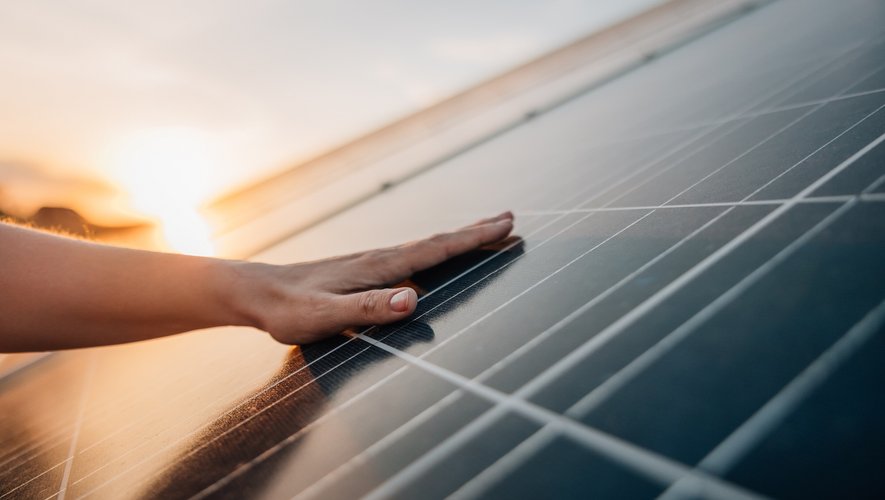Solar panel repairs, the “missing link” in the sector

(AFP) – In a secure laboratory, solar panels are tested for signs of weakness: in Savoie, the start-up SolReed, associated with CEA and Engie, is developing a technique to repair faults in photovoltaic arrays instead of sending the panels for recycling too soon.
Faced with the observation that “tens of thousands of defective panels are sent for recycling in France every year” even though they could still provide carbon-free electricity for many years, SolReed wants to become “the first European player to extend” their lifespan. , emphasizes Luc Federzoni, its co-founder.
According to the IEA, solar power is the “most important lever” to achieve carbon neutrality by 2050. But once the world deploys solar panels, it will also accumulate 78 million tons of waste from those panels by then. Report of the International Renewable Energy Agency (IRENA).
In France, end-of-life or defective panels are sent for recycling, which allows up to 95% of the materials to be recovered. Repair companies already offer their services to individuals, but nothing like this exists on an industrial scale in fields of several hectares.
For two years now, the company has been studying the relevance of the all-in-one panel detection and repair offer in the incubation period at the CEA in Bourget-du-Lac. The aim is to “go directly to the heart of the power plants” by involving mobile maintenance units, explains Matthieu Verdon, co-founder of SolReed, which Engie has been supporting since August 2021.
“Recycling is good (…), but it seemed to us that there was a missing link in the chain,” emphasizes William Arkwright, CEO of Engie Green, the solar and offshore wind arm of Engie, which presents itself as the leading operator of solar parks in France with by the installed power of 2 gigawatts (GW) and its share of the faults it is supposed to handle.
Every year, the group has to replace 2,000 of the 6 million panels it has installed in France.
Engie therefore entrusted SolReed with around a hundred of these faulty cells this summer to serve as guinea pigs for experts at the CEA’s National Institute of Solar Energy (Ines) laboratory.
Experience has proven convincing: “99% of repaired panels regain their original performance”, assured Matthieu Verdon during the recent formalization of his partnership with Engie and CEA.
– Puzzle –
Sometimes a worn connector can be identified just by looking at it. In other cases, solar simulator tests or electric current injections are necessary to find signs of weakness.
So various components – cables, diodes, soldering – can be repaired without having to scrap the panel before the end of its official life, which is estimated to be 20 to 30 years. This could help the industry end the headache of panel replacement.
For energy specialists, they must first find THAT broken cell in the midst of thousands of other panels. Drone flights with thermal cameras can detect anomalies, but these inspections are only done once or twice a year. And when the faulty panel is finally located, all is not resolved.
“Technological innovation happens very, very fast, so when a manufacturer sends you a new panel that is no longer the same size or the same performance, specifically, it’s a big problem,” says Philippe Alexandre, technical advisor at Engie Green. .
Over time, unreplaced modules occasionally create “holes” in the park, causing equally large losses in production, estimated at 6 GW in utility solar parks in Europe, according to SolReed.
Custom manufacturing is of course possible, but it is expensive. SolReed, on the other hand, calculated that reuse would allow an economic gain of 30% compared to a new panel.
Ultimately, the startup plans to develop monitoring tools that will be able to monitor the electrical output of each solar panel in real time, building a database of recurring faults. If necessary, maintenance activities can be recommended, even before a failure occurs.





